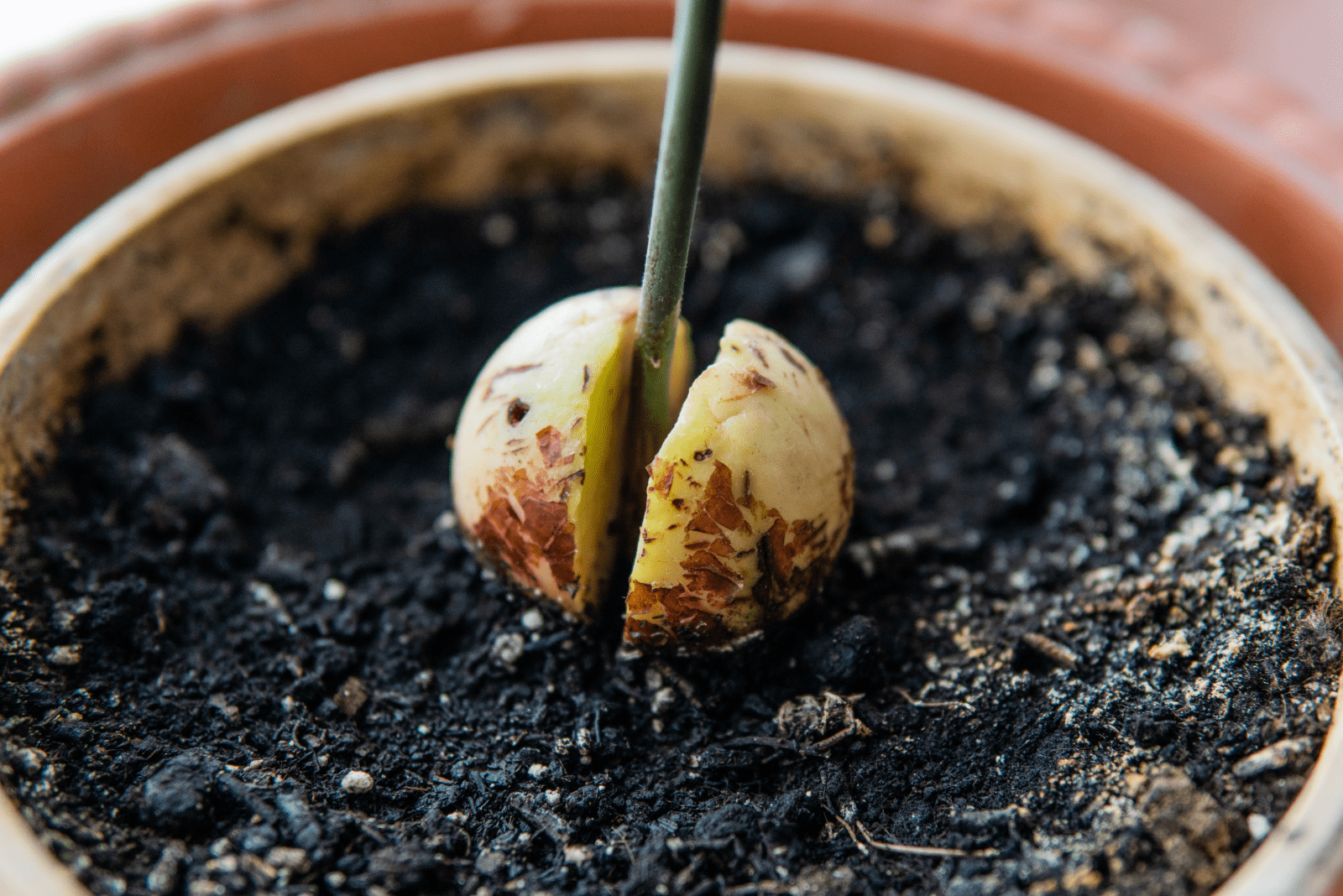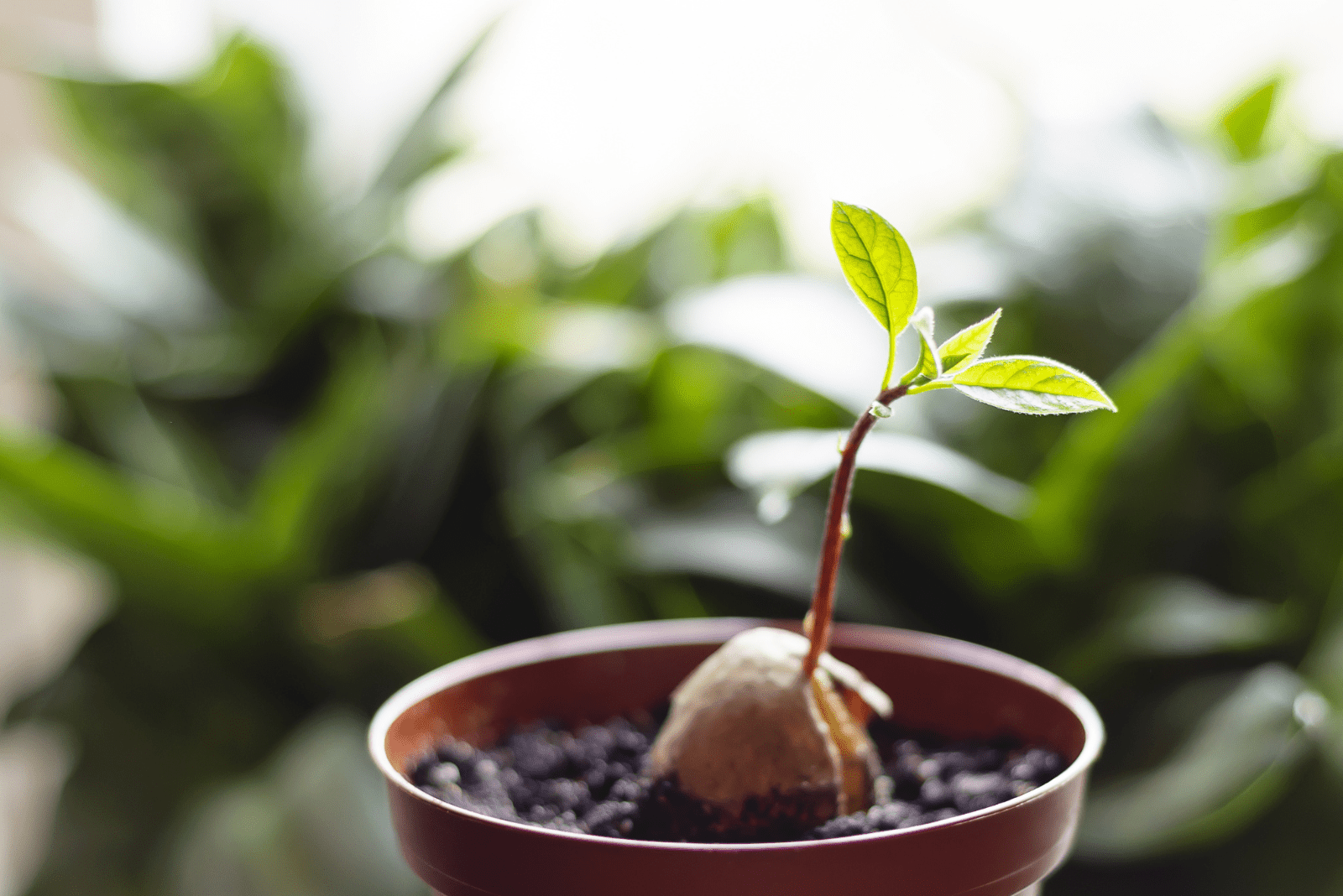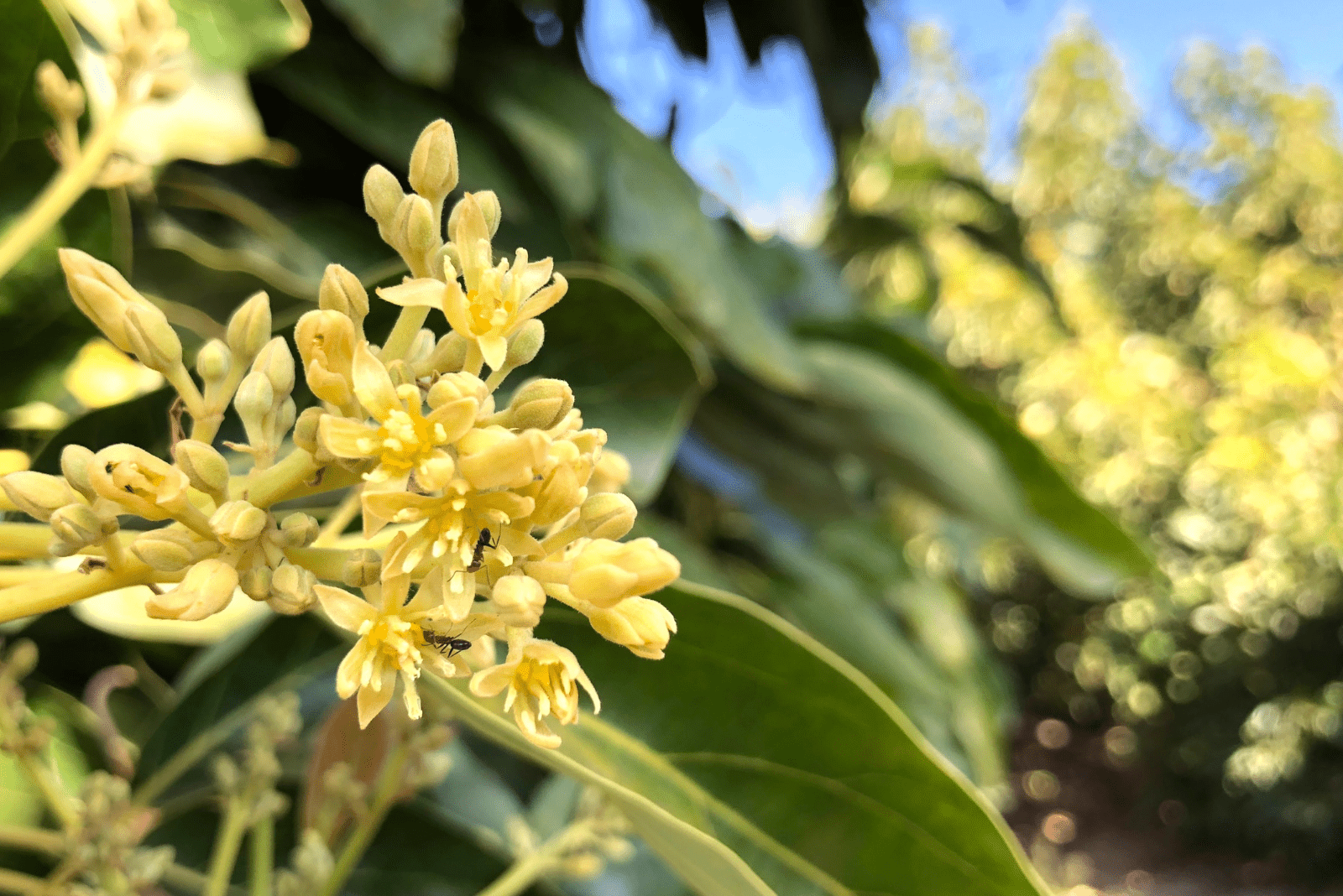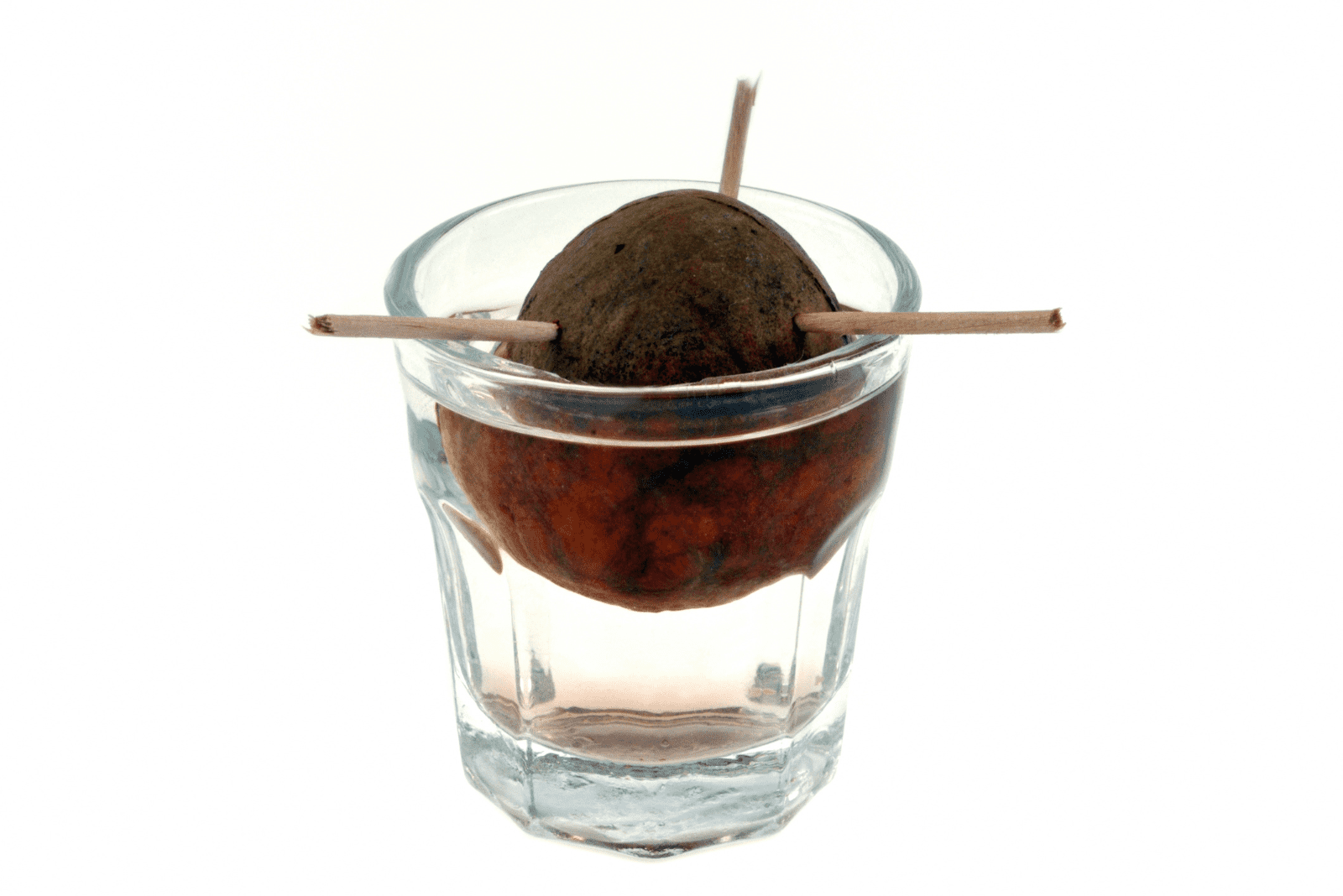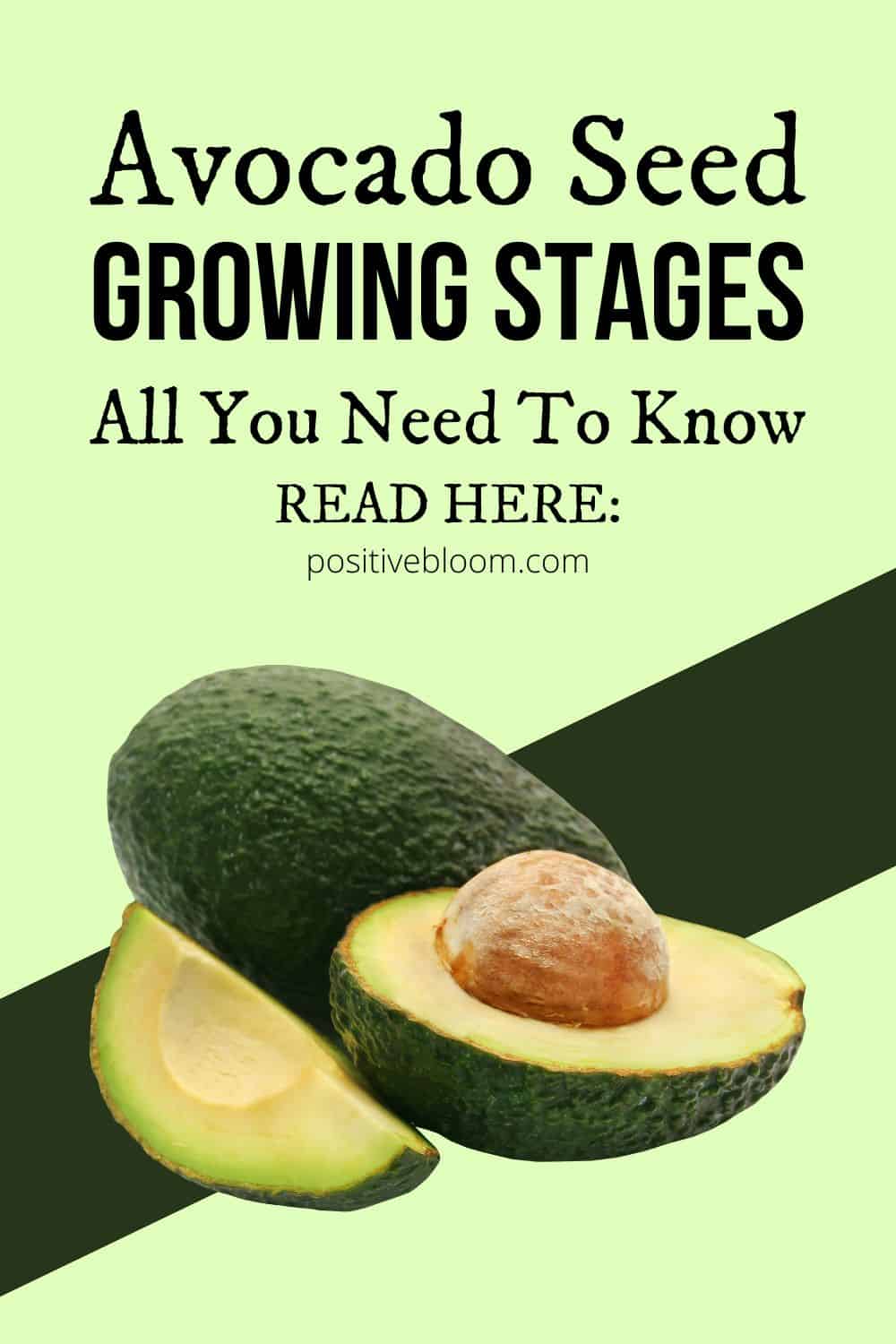I have been growing fruit trees for a long time, and believe me when I say that nothing is as enjoyable as planting avocado seeds and watching them grow!
Believe it or not, the avocado tree can live for more than two hundred years! But, of course, everything starts with the seeds.
In this article, I’ll take you through the avocado seed growing stages so you can see the importance of each stage for further avocado development.
I’ll also show you a great way to grow your own avocado tree!
Let’s get started!
4 Avocado Seed Growing Stages
An avocado seed goes through four growth stages: the seedling stage, the vegetative stage, the reproductive stage, and maturation.
Let’s get into details!
1. The Seedling Stage
Avocados and all other fruit trees contain seeds, and the typical cycle starts by putting the seed in the soil before the seeds sprout and new roots occur.
That sounds really simple, but when it comes to avocado trees, forget about simplicity!
The life cycle of the avocado tree starts with a pit buried in the ground and given 4 to 8 weeks to germinate. The avocado pit splits in half along the crack line.
The plant’s first true leaves appear at this stage. It takes about six weeks for the roots to appear from the bottom half, and for sprouts to appear from the top half.
The roots penetrate deep into the ground while the sprout rises. The first genuine leaves start to emerge after some time.
2. The Vegetative Stage
The vegetative stage is the second avocado seed growing stage. Your avocado plant can’t grow if the root system isn’t formed.
This avocado tree seed growing stage may last a few weeks; the seeds will crack, and you’ll notice small white roots on the lower part of the seed.
The seeds will also develop new stems; as soon as you notice the stems, you should repot your avocado tree.
The avocado fruit tree doesn’t flower like most other fruit trees; female flowers bloom earlier than male ones.
This feature discourages self-pollination and encourages cross-pollination.
It’s important to note that avocado trees that have the ability to self-pollinate should be placed close together in order to improve yield.
3. The Reproductive Stage
The avocado tree is considered to be a hermaphrodite, and its flowering cycle differs from other fruit trees. Pollen is created by the male reproductive component of an avocado bloom, known as an anther.
An ovary and a stigma form in the female reproductive component, and this component is referred to as a stamen.
Your avos will produce flowers after about 10-15 years. Flower buds frequently sprout over the winter. Buds can either continue to be vegetative or mature into reproductive blooms that bear fruit.
The avocado tree produces distinctive yellow-greenish blooms before developing fruit.
The majority of these flowers will drop from the tree. Still, any blossoms that were previously fertilized will grow into fruits.
The ovary grows into a complete avocado fruit, whereas the ovule becomes the seed.
Once the pollination ends, avocado tree flowers wilt.
4. Maturation
In order to get ready for spring blooming, the avocado tree produces buds during the winter.
Believe it or not, a single avocado tree produces up to one million flowers per year. Still, only 100 to 200 of those flowers turn into fruit.
The avocado tree produces fruit alternately, which means it can provide a huge crop one year and a meager harvest the following year.
Avocados don’t mature on the tree; ripening starts as soon as the fruit is removed. Avocado fruit needs about 6-7 days to ripen after harvest.
What Is The Best Way To Grow An Avocado Seed?
Here is a simple DIY method for growing your own avocado tree from the seed. This plant propagation method is called grafting.
Before you start propagating, remove the brown skin from the avocado pit, wrap the seed with a damp paper towel, and put it in a plastic bag to aid germination.
• Insert a toothpick into the seed center – about half an inch deep. Insert more toothpicks (2-3) and spread them evenly. This toothpick method worked perfectly for my avos.
• Now, put the toothpicks over a glass of water and make sure the bottom half of the seed (an inch) is below the water line.
• Place the glass in a warm spot where the seed can get a lot of bright, indirect sunlight. Avoid placing your avos on windowsills that are too sunny as direct sunlight may damage the seeds. Keep the bottom part of the seed in water, and pour fresh water every 3-4 days to avoid contamination.
• Wait until the seedling grows about 6-7 inches long, then remove half of the stem to enable the plant to start focusing its energy on new development.
• Put the sprouted seed into a pot with drainage holes that’s filled with porous potting soil to avoid overwatering. Overwatering causes many avocado leaf problems. For example, check the soil moisture content if you notice yellowing leaves.
• Keep the soil moist, prune your avocado tree regularly, and fertilize it weekly during the growing season. Avos need a lot of nitrogen, so make sure the first number in the npk ratio of the fertilizer you buy is high. You can find these fertilizers on Amazon.
Don’t change the light level or the temperature, and don’t feed your avos during the winter because these plants are dormant during colder months.
Wrapping Up
We all dream of making guacamole from our very own Hass avos, so growing avocado plants is a great idea!
Although the avocado tree needs a lot of time to reach maturity, it looks great as a houseplant.
There are four avocado seed growing stages. If you want a healthy avocado that produces lots of fruit, you’ll need to provide the seeds with all the necessary conditions.
Until next time!
Like this post? Share or pin it for later!

